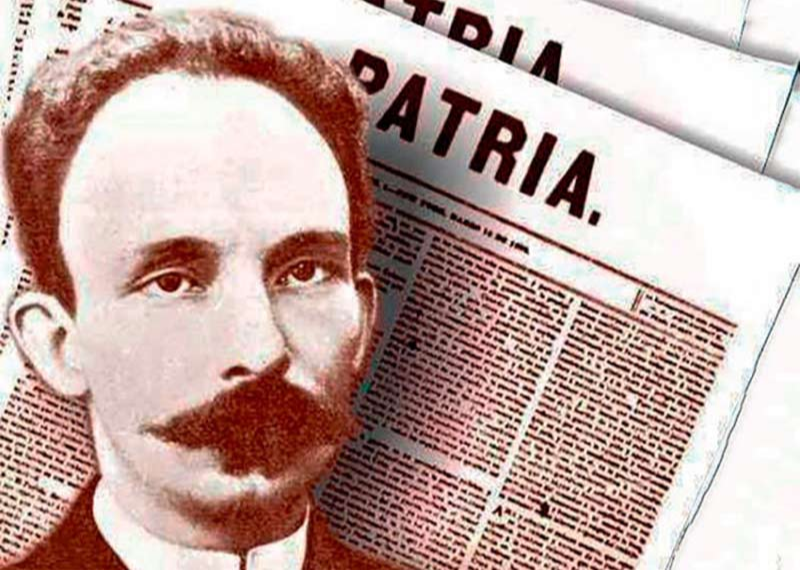The newspaper Patria, created by José Martí, the greatest of all Cubans, was born on a day like today in New York, which is why Cuban Press Day was established.
To remember one of the most important documentary legacies left by the hero is to honor his immeasurable work as a journalist (and undoubtedly in all areas), but his work in this one that concerns us means to evoke one of the best-known columnists, reporters or columnists in Latin America at that time.
In the year 1892, this publication saw the light of day in the American city and its last issue was number 522, dated December 31, 1898.
However, in those six years of intense journalistic work Martí made it clear that through its pages it was necessary to promote the purpose of the Cuban Revolutionary Party (PRC) to achieve the total independence of the islands of Cuba and Puerto Rico from Spanish rule and the armed struggle was the way.
As a noted journalist at that time, the Maestro already had works in important publications such as El Partido Liberal, of Mexico, and La Nación, of Buenos Aires.
Cuban critic José Antonio Portuondo once noted that if Martí had been asked to fill out one of those long forms of today and asked to specify his profession, he would have marked, “without a doubt,” journalist.
“Because that was, in short, his most constant profession (…) the work of bread winning (…) effective instrument of his revolutionary struggle and ideological formation. And since he began to make himself known, it is as a journalist,” Portuondo pointed out.
In each stage of his life in the profession, as the following periods after his death, all agreed, and do so today, that since his first articles in “El Diablo Cojuelo” and “Patria Libre” – newspapers born in January 1869 – he evidenced the flight of his pen.
Of the 28 volumes that make up his complete works, most are composed of his works extracted from the columns of newspapers and magazines.
It is not unknown that he expressed his main ideas under the euphoria of the momentary impressions and of each place where he was as a chronicler (and other genres) in different countries.
The intellectual found in those media the most appropriate scenario to reflect the palpitation of everyday life, but it was Patria, the organ of the PRC, his most important work in journalism.
The publication initially appeared on a Saturday -when it turns 134 years old in 2026, the almanac will again mark that day of the week- and those who contributed with the financing for its opening and support were the tobacco growers of Tampa and Key West, as well as Cuban and Puerto Rican intellectuals living in New York.
In one of the pages of the first issue, Martí reasoned in an article entitled “To our press on the role that corresponds to it in the battle for independence and freedom” and in that sense he wrote: “This newspaper is born, at the hour of danger, to watch over freedom, to contribute to make its forces invincible through union, and to prevent the enemy from defeating us again because of our disorder”.
After Martí’s death, in the issue of Patria corresponding to June 17, 1895 (number 166) a last minute note appeared: “When the present issue went to press we received the cruel certainty that the exemplary Apostle, the beloved teacher, the self-sacrificing José Martí, no longer exists. Patria, reverent and troubled, will dedicate its next issue to glorify the patriot, to exalt the immortal”.
In fact, the June 25 issue of Patria was dedicated to Martí and intellectuals of great value who were then in New York wrote their impressions and memories about the transcendental figure of the history of Cuba and America.
To honor the date of appearance of this important publication, Cuban Press Day has been celebrated on March 14 since the early 1990s


